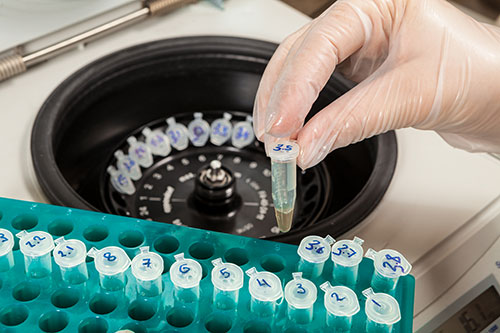Introduction
In the previous lesson, you learned how DNA was collected from a crime scene, and you analyzed DNA profiles to determine if there was a match between a suspect and the DNA collected at the scene.
There were some steps missing, however. How was the information given in the DNA profiles produced from the samples collected at the scene?
In this lesson, you will look at those in-between steps and see what technology and processes forensic scientists use to generate DNA profiles from collected evidence.

Following successful completion of this lesson, students will be able to...
- Describe the process used to prepare and test DNA samples in forensic laboratories.
- Use the process of gel electrophoresis to create and compare DNA profiles.
Essential Questions
- What portions of the DNA are compared when establishing a match between a subject and samples collected the scene?
Enduring Understandings
- Evidence must be collected in a specific and strategic manner, as well as systematically documented, to ensure that no tampering or contamination occurs.
- DNA can be retrieved from a variety of human cells and utilized to directly link an individual to a crime scene with reasonable certainty.
The above objectives correspond with the Alabama Course of Study: Forensic Science and Crime Scene Investigation standards: 19.